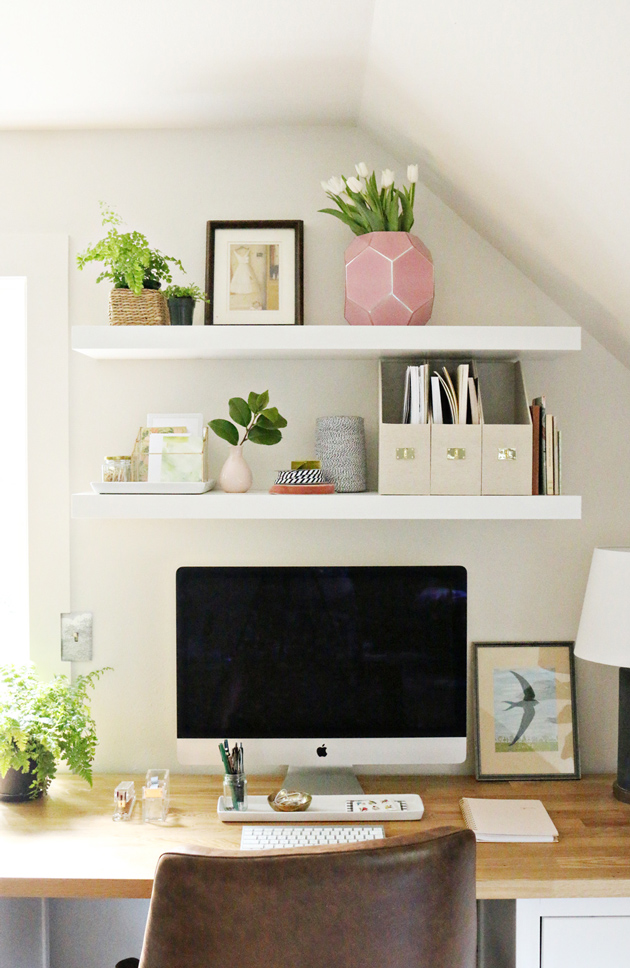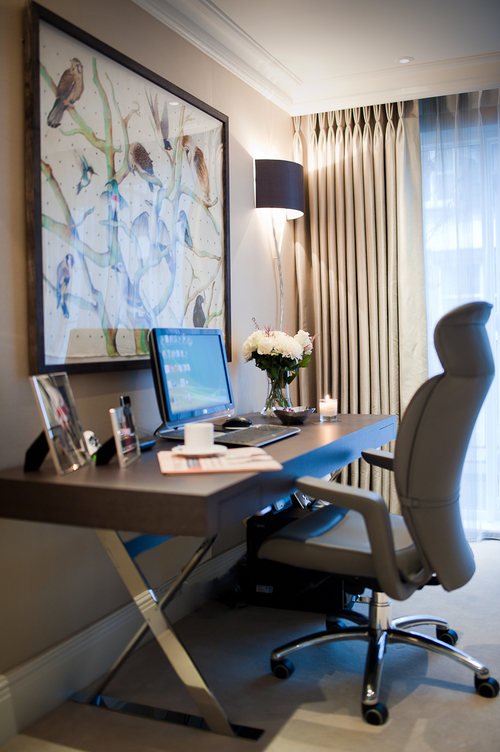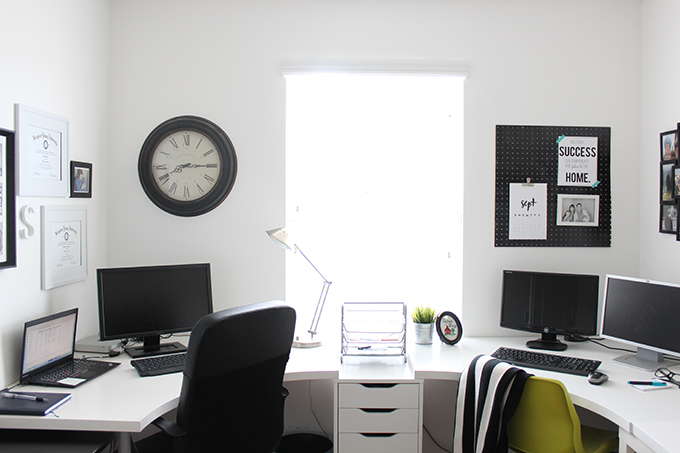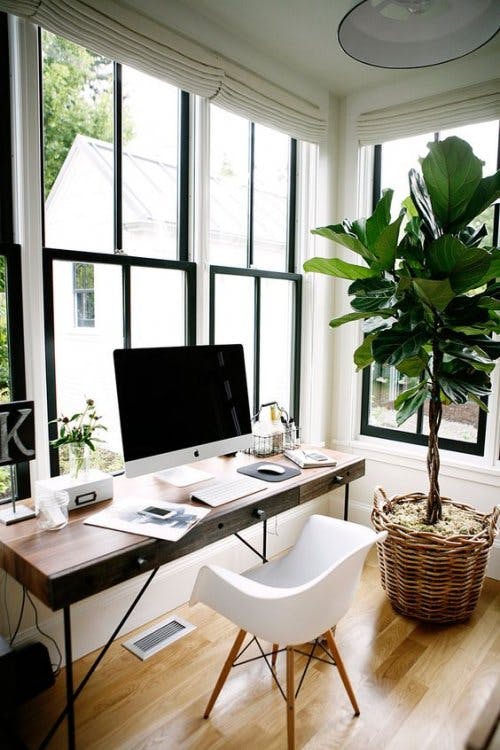The number of people working from home has risen to its highest level since records began; according to the Office for National Statistics. The Government expect half of the UK workforce to be working remotely by 2020.
Far from being something to be slightly embarrassed of (as per 15 years ago when ‘anyone who was anyone’ worked from a high-profile office in the City), studies now show that those who work from home love their job more than those who work in an office.
This is particularly pertinent in the Interior Design industry, where a large portion of Interior designers are small one-man-band companies. Many Interior Designers come to this wonderful industry as a second career, and therefore most work from home as standard.

Working remotely even increases productivity in staff by 16% (according to smallbusiness.co.uk). Employees find themselves free from the stress of commuting, gain a couple of extra hours of sleep, and it’s good for both budget and the environment!
If you are going to work from home though, it’s essential that you have the right ‘work’ space in order to focus and concentrate. Here are some handy tips on how to design a home office for yourself or your client so that it is productive as well functional.
1. Internet and Wi-Fi
Having a double internet supply is an absolute necessity when working from a home-office. We’ve all experienced the terror of discovering that there’s a problem with our internet connection, but when working from home this can cause major disruptions to your productivity. With a handy second internet supply to your office, this eliminates those scary moments! If unable to have a double internet option, then having an ‘emergency’ internet kit is the next best thing! Whether this is provided by a ‘dongle’ or by an emergency tablet/ipad/phone that can generate a short term local 3G bubble – be sure to have in place a internet plan that works best for you.
2. Ergonomics
When working from home, you may well discover that, far from doing ‘less hours’ as used to be the general opinion of home-workers, you actually do many more. We all know that the end of day cut-off point is a much blurrier line when you are already at home! For this reason, it’s extremely wise to invest in an ergonomic chair for your home office. It will probably be the chair you sit on more than any other! Don’t skimp on cost and as hard as it is for a designer to say this out loud….. you may need to (gasp) choose comfort over aesthetic design. An ergonomic chair will improve posture and performance, but most of all it will keep a bad back away!
Your chair seat should raise up and down to suit your leg length, as your feet should always be able to rest flat on the floor. Your chair should also have arm rests to help take strain from your shoulders. A must for us here, is caster wheels – we can’t imagine have chairs without them now.
We rather like this one from one of Hayley Manning‘s projects, both ergonomic and stylish.

3. Plants, plants and more plants!
Numerous scientific studies have proven that having plants and other greenery in our workspaces makes for a happier, healthier environment. Along with making your office space look more attractive, it’s actually been proven that office plants increase productivity as well as decreasing sick days. We’ve recently had our office Feng Shui’d by the lovely Suzanne Harper and one her immediate recommendations was to have a big leafy plant behind Siobhan’s desk. If you are short on space in your office space, try popping a small pot-plant on your desk or windowsill.

4. Multiple Monitors
Small businesses are, of course, always looking for ways to improve efficiency, particularly when it comes to computer usage. Before you go spending your money on a faster processor or larger hard-drive, perhaps consider the option of adding a dual monitor set-up instead.
Here at Metier, we can’t say enough about the effectiveness of having two computer monitors! Most Interior Designers have the need to use multiple programs at any one time. Switching back and forth between Email, ACAD and Photoshop along with all the various other different applications us Designers use on a regular basis, can get a bit frustrating and confusing. A second monitor providing a bit of extra visual room, really makes this process so much less painful – and way more productive!

5. Store your Price Lists and other Data….Digitally
If your home office is anything like ours, finding space to store copious paper documentation can be a on-going issue. Within the Casey & Fox office, Siobhan has been transitioning to keeping their price lists and even some of our catalogues, digitally rather than hard copies on their already bulging bookshelves! This actually makes things far easier and much quicker to find! This also goes a long way in streamlining the office processes as well as being aesthetically pleasing. Digital storage also has benefits with regards to security issues.
Access to certain information can be restricted to those who need it only. Your data cannot be lost or altered accidentally. Digital storage should also make the ‘removal of data’ in terms of new GDPR legislation far less problematic!

We are not quite the “clear desk” office users, however we are on our way to being as paperless as possible. 🙂
At Metier Rendezvous, we recognise the ever-growing pressure on Interior Designers in the current economic climate. We provide pro-active peer support for our members sharing business ideas, tips and collaborations on projects. We also host industry related workshops and regular brunch events where we share our experiences face to face.
If you are interested in becoming part of our friendly community of Interior Designers and wish to gain access to our enormous Supplier Database, please do get in touch to apply for membership!